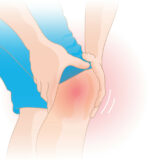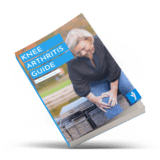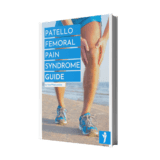Most Common Headaches & how to treat them


When we talk about headaches almost every human on earth already experienced it once in a lifetime. The symptoms can vary from short periods of mild pain on one side of the head to vomiting, severe pain, as well as visual and sensory deficits. It can occur after reading a book, studying, falling on the head, infections or even just when moving your shoulders. Despite that being said, we still do not know all of the causes, in fact there is still a lot to discover. There are several different types and not each of them is easy to diagnose and treat. Approximately 1 billion dollars each year are spent on unnecessary brain imaging. In this Blogpost you will get insights into the most common types of headache and their treatment options.
What should be assessed?
First of all, it is important to know that if you suffer from frequent headache pain, it is recommended to get it checked up as soon as possible. Like in most physical complaints, early and accurate diagnosis and appropriate treatment will help to reduce pain. Before you go visit a physiotherapist or general practitioner, you should already start writing a headache related diary. This should include all the details about your symptoms such as frequency (how often?), duration (minutes/hours/days/weeks?), character(hier mehr beispiele), severity(hier auch beispiele), location and triggers (movement, foods, etc.). The physiotherapist or physician will then obtain more features about the individual lifestyle including diet, sleep habits, caffeine use, work and personal stress, family background and age of onset. Finally, the individual medical history is the point of interest. Diseases such as an associated sleep disorder, depression, anxiety and an underlying medical condition are highly relevant. In addition to that, there are a variety of questionnaires, that your therapist or doctor can use for the diagnosis.
Consecutively, a physical examination including the posture of your head and shoulders is being done. How far and how smoothly you can move your neck is very important in headaches, this means, that the examiner detects potential sources of your pain in surrounding joints and tensioned muscles. Special manual tests can help to confirm the diagnosis.
How do headaches get classified?
As we said in the previous paragraph, physical examination plays an important role in diagnosing different types of headaches. We want to find out if the headache is a disease itself (primary headache) or rather a symptom of another pathology (secondary headache). In the latter case, headache is the result of another condition, while in a primary headache, the headache is the disease itself with no known underlying cause. The following table shows the most common headache types:
| Primary Headache | Secondary Headache |
| Migraine | Cervicogenic (CGH) |
| Tension Type (TTH) | Tumors, Vascular diseases, medication |
| Cluster headaches | Infection (e.g. Sinusitis) |
| Trauma (e.g. Whiplash) |
Table 1: List of primary and secondary headaches
Many patients show diffuse symptoms, which complicates the diagnosis and makes it difficult to classify the headache. As an example, 68% of the patients with a primary headache (e.g. migraine) have neck pain, but neck pain is usually present in cervicogenic headache, which is considered a secondary headache disorder. While secondary headaches seem more severe and in most cases need to be treated primarily by medical doctors, they are relatively rare. Fortunately, over 90% of patients who present to their general practitioner for evaluation of headaches have a primary headache disorder.
What are the most common headaches and how do we treat them?
In this paragraph we want do discuss the 3 most common types of headaches: cervicogenic headache, tension type headache and the one everybody heard about, the migraine.
Cervicogenic headache (CGH)
This type of headache is relatively easy to treat for physiotherapists. It is a common chronic and repetitive headache that usually starts after neck movement and presents as pain going up on one side of the head and face. So, the problem maker is the neck. Since we know the source of the pain, we can treat this headache by working on neck range of motion and tight muscles. Therapy methods, which have been shown to work are rebuilding strength and endurance in your neck muscles, but stretching and manual therapy can also help with easing your discomfort. While your physiotherapist will give you exercises and stretches to do at home, adjusting your workspace and car seat more ergonomically should also be included.
Tension type headache
Tension type headache (TTH) is probably one of the most common headaches. According to research, 80% of the general population has it once in a lifetime. A tension type headache is characterised by rare episodes of pressing or tightening pain, typically on both sides of the head. The intensity is in most of the cases mild to moderate and the duration of the headache can be minutes to days. The pain doesn’t worsen with routine physical activity (beispiele)and isn’t associated with nausea, but sensitivity for sounds and light just like in the migraine headache may be present.
To treat TTH, you want to diminish the tension or stress levels in your life. On the other hand, there is research that found that people experiencing TTH had a more forward head position than people who didn’t experience this type of headache. Due to this, your physiotherapist will work on your posture in general, head and neck positioning and your sitting routine. In that way, you get less tension in that upper cervical part and less discomfort. Other treatment options are endurance and strength training of your shoulder girdle and neck muscles, stretches and PMR (progressive muscle relaxation).
Migraine
The migraine headache is more severe than the other discussed types in this blogpost. It is the 3rd most occurring disorder and 7th highest cause of disability worldwide. Despite the fact that it causes significant disability, migraine remains underdiagnosed and undertreated.
While the main cause of migraine is not fully understood, scientist believe that people, who already suffer from mood and mechanical disorders of the spine and neck, have a higher chance to get a migraine. Usually, it appears between the ages of 25 and 55 and females are 3 times more often affected than males. The pain is typically on one side of the head with a pulsating feeling and moderate to high intensity. Typically, the symptoms increase with routine physical activity like climbing stairs or walking. While you’re experiencing the headache there is the possibility that you will also experience sensitivity for sounds, bright light and visual deficits, which is called “aura”. These symptoms will mostly lead to nausea and then fully regress back to normal. The migraine headache mostly manifests itself in attacks lasting for 4 to 72 hours.
Despite the fact that we don‘t entirely know the real cause, research has been done on possible treatments. The best treatment besides medication like triptane and medication for your nausea is decreasing your activity level when you feel a migraine headache building up.
Other treatment options that have shown to be beneficial are doing cardio, stretching and relaxation exercises. A study from 2020 found low-quality results in nutrition patterns, in which alcohol and caffeine consummation weretriggering and increasing the frequency of migraine attacks, while low-fat diets and elimination diets showed quite positive effects to decrease the frequency.
We hope this gave you some pointers about your headache. If you have any questions or concerns regarding your individual situation you can book an appointment with our physiotherapist.





